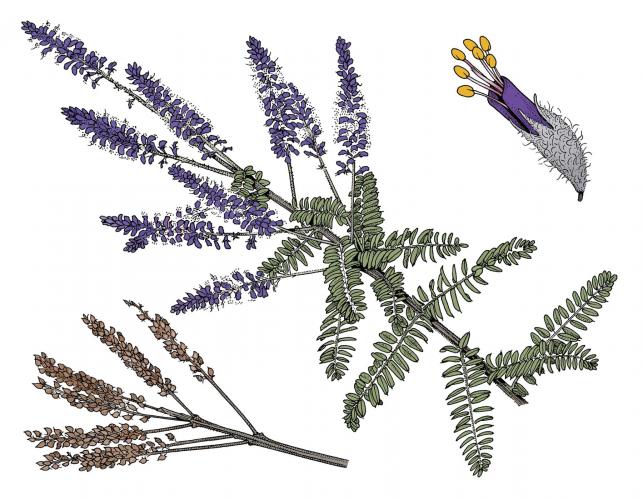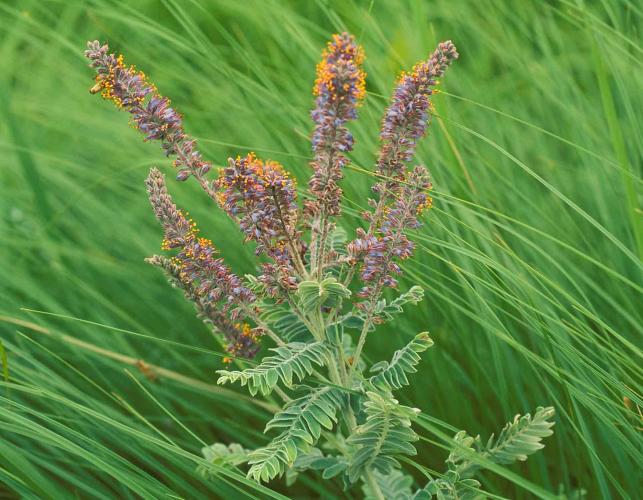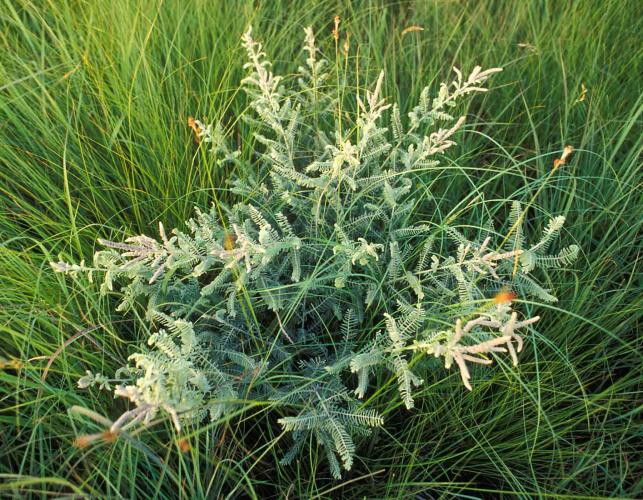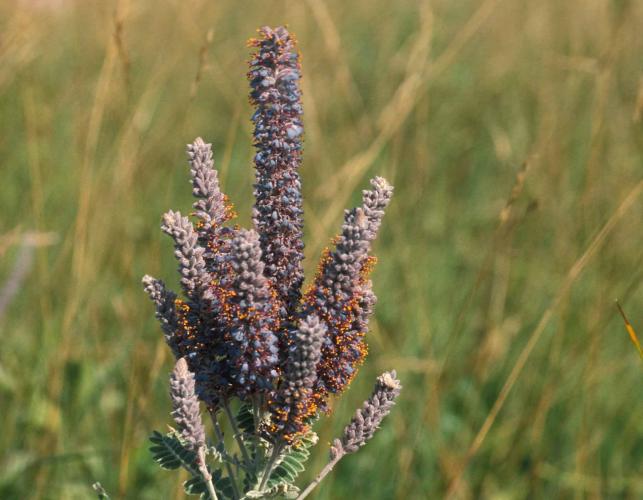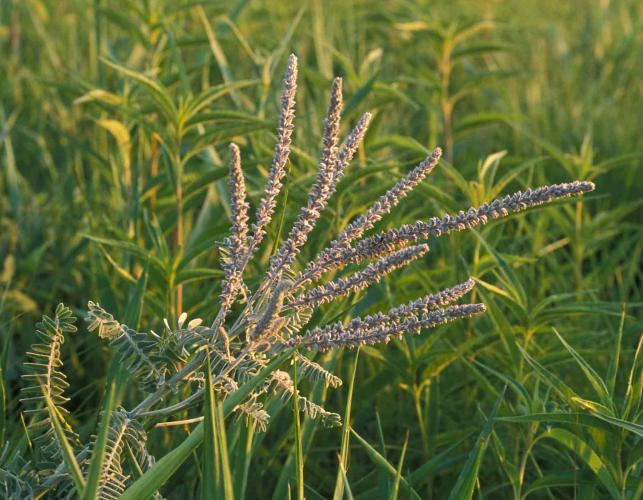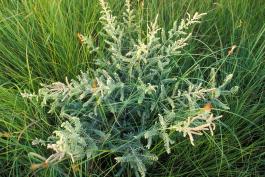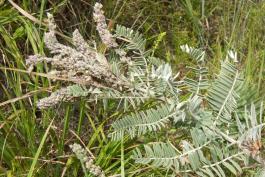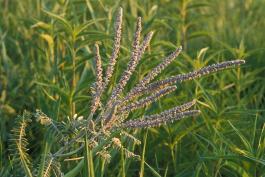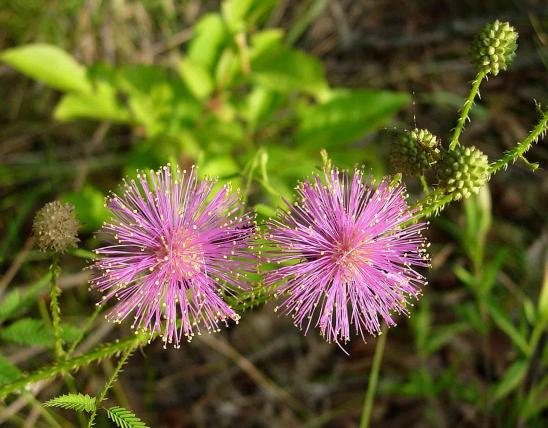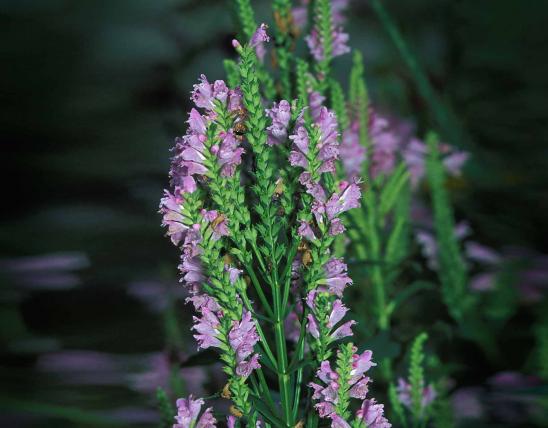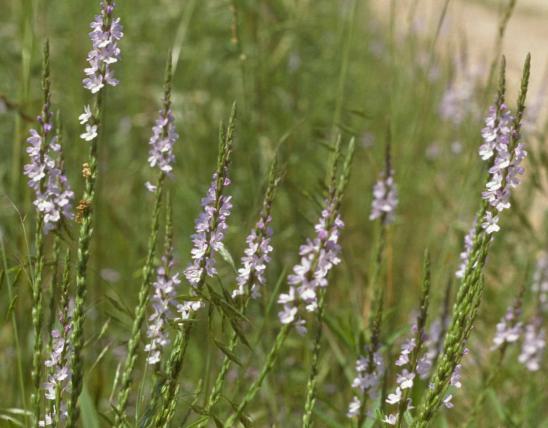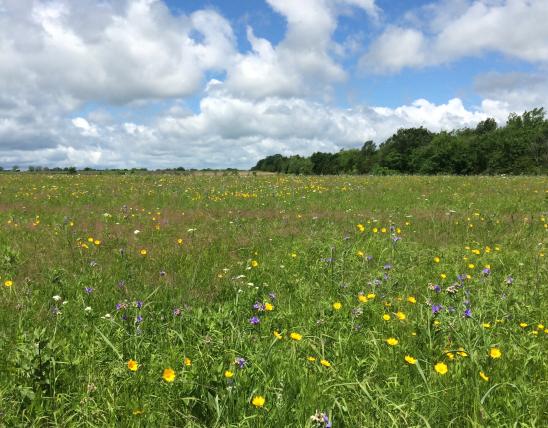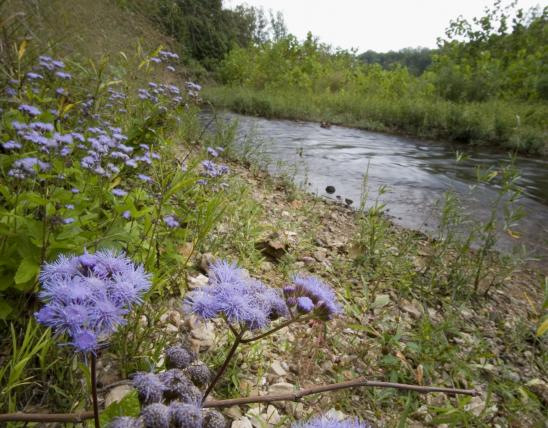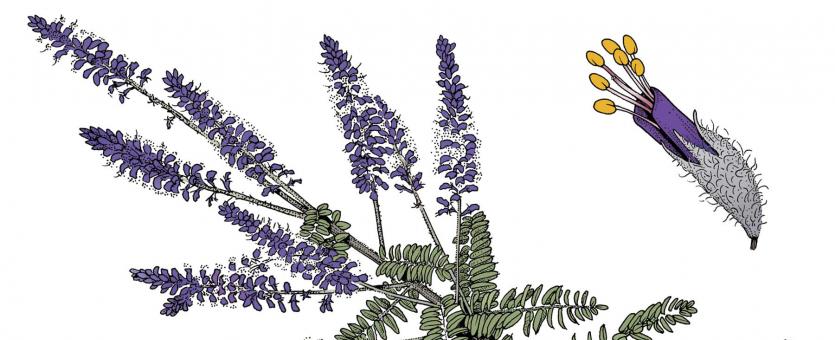
Lead plant is a small, branching, shrubby perennial. It is densely hairy and can become woody with age, but some winters it dies back to the ground.
Flowers are tiny, massed in tight, elongated spikes; stamens with reddish filaments and yellow anthers protrude from lavender or purple flowers. The corolla is reduced to a single, top petal (the “sail”), lacking the other petals (the “wings” and “keel”) common in pea-family flowers. Blooms May–August.
Leaves are alternate, feather-compound, to 4 inches long, with up to 5 rounded, short, gray-hairy leaflets each to about ¾ inch long and ½ inch wide.
Similar species: Indigo bush (A. fruticosa) is a large, bushy shrub, lacking hair, to 6 or even 10 feet tall. Its leaflets are up to 2 inches long and 1 inch wide. It is found in streamside thickets and moist prairie areas.
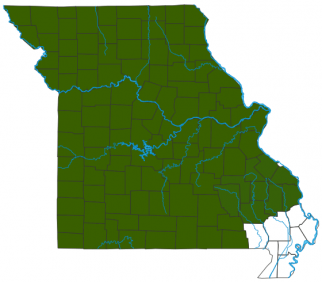
Habitat and Conservation
Status
Human Connections
Ecosystem Connections
